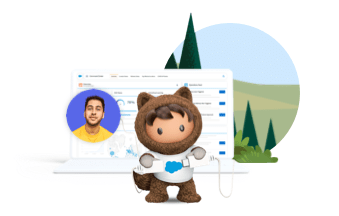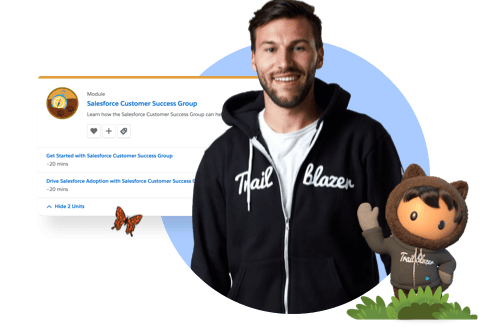Work Toward a Single View of Your Customer
The integration opportunity is knocking.

We’ve all had the experience of reaching out to customer service, only to be shuffled across multiple departments that all ask us for the same information. All too often, customers have to navigate a company’s org chart to get the answers they need — mainly because employees don’t have easy access to a single source of truth for customer data.
The fact is, customer data comes from too many sources to easily consolidate and make sense of it all, and silos only exacerbate these challenges. This, in turn, negatively impacts the quality of customer and potential customer experiences.






Companies need a single source of customer truth.




Decide what and how to integrate.
To provide a connected experience, data may need to be integrated between a broad range of business applications, systems of record, and external sources.
Again, taking a use case approach can help you decide what systems and data need to be integrated. If, for example, you want to provide personalised product recommendations for customers via email newsletter, product data from your ecommerce platform will need to be accessible from your email marketing engine. And you will likely want to automate processes, such as sharing pricing information between your enterprise resource planning (ERP), CRM, and ecommerce systems.
Then, you need to decide how to integrate the systems. This can happen in multiple ways:
1
2
3
Each approach has its pros and cons. For example, while it may be tempting to choose best-of-breed applications from different vendors, writing custom integration code often results in a messy web of code that breaks with updates and new integrations. On the other hand, an integrated all-in-one solution may not have the capabilities some lines of business need.
Alternatively, you can take a hybrid approach by adopting a customer-centric platform like Salesforce Customer 360, which offers market-leading applications for key lines of business, all built on a shared platform — but can also be highly connected and integrated with other software through APIs and data management tools. More to come on that in a minute.
Customer Story
e.l.f. Cosmetics

e.l.f. Cosmetics was one of the earliest beauty brands to use ecommerce, and it has since undergone a transformation to provide a connected experience for its customers.
The transformation required integrating the company’s marketing, ecommerce, and service systems. This has enabled e.l.f. Cosmetics to better understand customer behaviours, use artificial intelligence to improve customer engagement, create personalised customer journeys, and reduce service issues.
As a result, the company increased daily browse-to-buy conversion rates to levels only previously seen on Black Friday and saw a 50% decrease in daily customer service tickets.
The experience has given Ekta Chopra, Chief Digital Officer for e.l.f. Beauty, insights into what organisations should consider before embarking on an integration project. Her recommendations are to:
- Make sure you have someone with integration expertise on the team with a deep knowledge of your architecture.
- Take a use case-based approach by designing the integrations for real-world situations.
- Understand what inputs are necessary for each use case before getting started.
- Map out your customer journeys.
To help plan integrations for key use cases, Chopra recommends using Salesforce Solution Kits. These kits lay out the best practices and materials needed for common use cases, including abandoned shopping carts, personalised recommendations, and order histories.

We’re on the road to Nirvana; a single view of the customer is the key to a frictionless consumer journey!
Ekta Chopra, Chief Digital Officer, e.l.f. Beauty

Empower your employees with a single source of truth for every customer.
1

2
Want to dive deeper? Learn how APIs can help you integrate data from any system, whether on-premises, in the cloud, or legacy.
Access thousands of pre-integrated apps.
Trusted Salesforce partners have created thousands of apps that integrate seamlessly and securely with Customer 360, and can all be found in the AppExchange. This ecosystem of more than 5,000 solutions and 80,000 peer reviews can help you solve any business challenge and extend the power of the platform.
Getting the right technology platform and solutions in place is vital, but that won’t guarantee success until you have your people onboard. The next step is to drive the adoption of new apps and tools through change management and training.

Tool
Customise a solution that's right for your business in two simple steps.

Webinar
Watch Now - Unlock a Personal Experience for Your Customer with Customer 360

Article
Why Hyper-Personalisation Is the Future of Customer Experience
More Resources

Guide
The Transformation Playbook

Research and Reports
State of the Connected Customer Report

Webinar
Better Together: Salesforce + Tableau - How data and insights put companies on the road to success.







